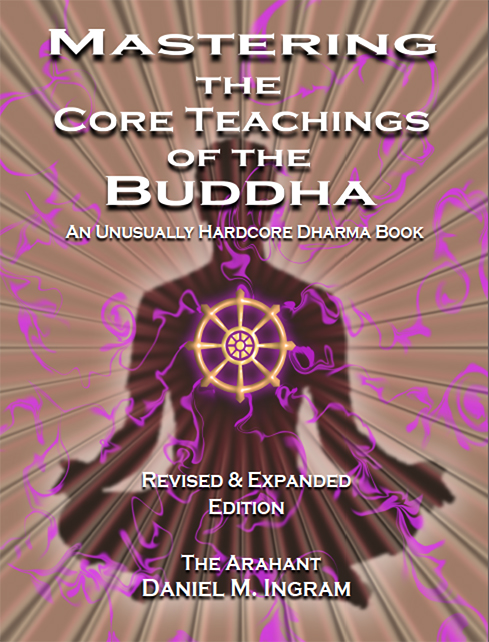The Karma Models
← The Radiance Models | The Perpetual Bliss Models →
Karma models involve the promise that somehow realization eliminates, exhausts, cancels out, or moderates the forces of causality that would cause bad things to happen to the realized being. Karma involves action and its consequences, and in its simplest form is essentially the statement that causes lead to corresponding effects in a lawful way. The subject is imponderable, as the forces and factors involved are so vast and complex that no mind can fully comprehend them. That said, many Buddhist and non-Buddhist models and ideals subtly or overtly present a vision of awakening that promises some sort of relief or freedom from worldly adversity.
However, if we look at the life of the Buddha who, by definition, is as awakened as you can get in Buddhism, lots of unpleasant events happened to him, at least according to the texts. He had chronic headaches and back pain, got illnesses, was attacked by bandits, and was the target of others’ assassination attempts. [See Cullavagga (Cv) VII, 3.9 ( go to page 271); SN 1.38; SN 4.3.]
His own order broke into warring factions, people harassed him, and on and on. Thus, even the Buddha, after his awakening, was not free from adverse experiences, and so it would seem naive to assume that we would be. [See http://www.ancient-buddhist-texts.net/English-Texts/Why-the-Buddha-Suffered/Why-the-Buddha-Suffered.pdf.]
However, the karma models raise an interesting question, that of the timing of the fulfillment of the promises of awakening and what this has to do with death. The Theravada claims that the moment of complete freedom from suffering is at the death of an arahant or Buddha, as it is only then that there is no more coming into further birth and there is the complete cessation of the senses which cause pain and discomfort.
However, the karma models can be used by a few, non-hyper-literal, non-hyper-dogmatic people with real wisdom in a way that is neither destructive, overly simplistic, nor reductionistic. By seeing each thought, state, and emotion as it is, there is an increased ability to watch these arise and vanish on their own, thus allowing for their causal karmic force not to wash through to the future without some moderation of intelligence and wisdom. In this way, past causes, habits, tendencies, and the like can be mitigated through clear seeing, and the actions we take based on these that create future causes can be done with more awareness, clarity, and a broader, more inclusive perspective. This is not the same thing as eliminating all “negative” karma, but it is practical, realistic, and verifiable, and thus represents the truth found in the karma models.
One of the most dangerous variants of the karma models are those saying that, past a certain level of realization, awakened beings are not creating karma at all while yet still alive. While these traditions typically use a very specialized and subtle definition of karma, in most people’s hands this gets subtly interpreted as their actions having no possible bad consequences due to their level of awakening, a concept fraught with peril, creating the possibility of rationalizing all sorts of harmful behavior. If you are working in a tradition that uses this sort of model, take great care with it and remember training in morality, as the laws of causality still apply regardless of whether we conceptualize causality as karma.

